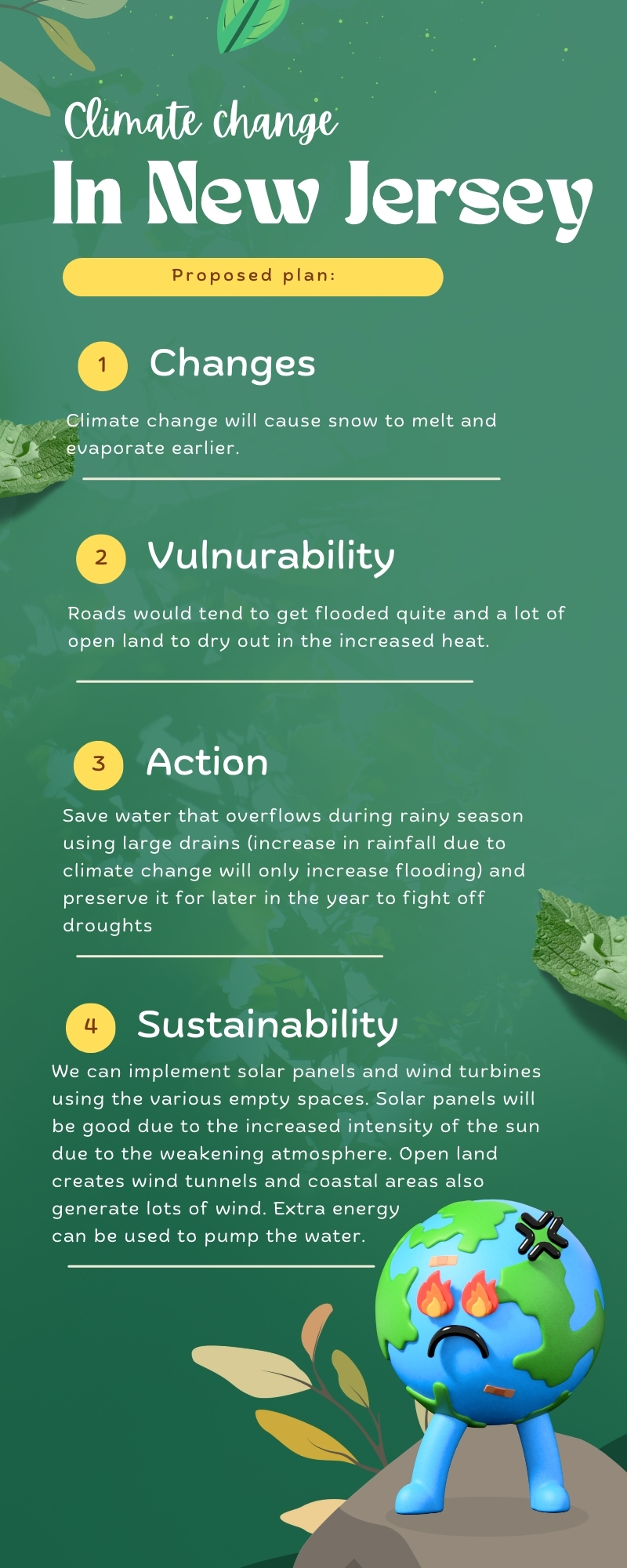The yearly precipitation in New Jersey is predicted to rise by around 7.5% during the next 80 years, from the current 45–50 inches. There is a predicted increase of 3.6 to 7.2 degrees Fahrenheit within the same time frame. During the rainy season, rivers and lakes will be inundated, while during the dry season, there will be severe drought. Flooding will make roads and transit much more difficult, and ongoing droughts will have a range of negative effects on infrastructure and animals. To address these two problems, large drains can be built close to frequent flood areas. Long pipelines that link to subterranean storage tanks will be attached to these drains. The water will be kept in reserve for the dry season when it will be applied at different times to hydrate the land to maintain its health. Water will be moved using pumps, and pipes can be installed to move water straight to certain locations and back as needed. To offset the cost of energy required to pump the water, solar panels, and wind turbines can be put up. An increase in storms will also mean high-intensity winds are inevitable making wind-turbines even more beneficial.
Contact us
Thank you for your interest in contacting Future Engineers. We look forward to connecting with you!
General Inquiries
support@futureengineers.orgSponsorship Inquiries
sponsor@futureengineers.org
